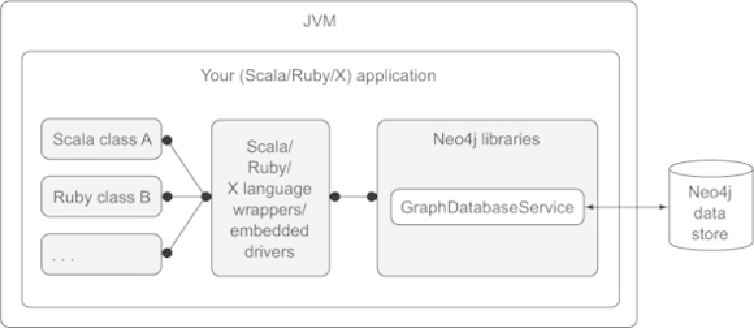Database Reference
In-Depth Information
The
ImpermanentGraphDatabase
class can be found in the test neo4j-kernel library
(specified in of
listing 10.1
). Using Neo4j with an embedded data store (see in
listing 10.3
) results in the physical nodes and relationships being stored on disk. Using
Neo4j with an impermanent backed data store, however, results in the data only being
stored in memory rather than on the filesystem. You're strongly encouraged to unit test
your Neo4j code, and this
ImpermanentGraphDatabase
implementation provides a
fantastic way to test or prove certain graphing scenarios within your problem domain.
10.2.2. Other JVM-based integration
The Neo4j community is a diverse and active bunch, and it has already seen the creation
of numerous language and framework bindings for using Neo4j in embedded mode with
other languages such as Scala, JRuby, and others. This is typically accomplished through
language-specific wrappers that adapt the Neo4j Core Java API into an API that can be
used natively (and in some cases idiomatically) by the JVM language and framework in
question.
Figure 10.3
illustrates what these deployment scenarios typically involve.
Figure 10.3. Other JVM-based embedded deployment approaches, involving language-specific wrappers and
drivers for Neo4j
What's important here is that most of these wrappers merely front the Java-based Neo4j
classes and API. This means that all the properties and semantics associated with the Java-
based embedded version will typically also apply to a wrapper-based implementation, with



